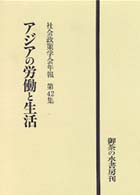Full Description
Is this the right book for me?Do you want to engage with Babylonian culture and literature in the original language? The course will introduce you to a fascinating world of gods and demons, heroes and kings. The readings are drawn from myths, letters, law-codes, medical incantations, and other authentic, ancient writings. The language is presented in the Roman alphabet, with an explanation of cuneiform script, and the main features of Assyrian - cognate with Babylonian - are also explained. Learn effortlessly with a new easy-to-read page design and interactive features in this book from Teach Yourself, the No. 1 brand in language learning.Complete Babylonian includes:Part one - Getting startedChapter 1: IntroductionChapter 2: How to use this bookChapter 3: PronunciationChapter 4: Writing Babylonian in Roman CharactersChapter 5: Roots and patternsPart two - Nouns and adjectivesChapter 6: Overview of nouns and adjectivesChapter 7: Nouns and adjectives, singularChapter 8: Nouns, pluralChapter 9: Adjectives, pluralChapter 10: The construct stateChapter 11: Possessive suffixesChapter 12: The dualChapter 13: PrepositionsPart three - Strong verbsChapter 14: Overview of verbsChapter 15: The presentChapter 16: The preteriteChapter 17: The perfectChapter 18: The stative and the verbal adjectiveChapter 19: Verbs with accusative, dative and ventive suffixes Chapter 20: The imperativeChapter 21: The precativeChapter 22: The infinitivePart four: Weak and irregular verbsChapter 23: III-weak verbsChapter 24: I-weak verbsChapter 25: II-weak verbsChapter 26: I-w verbsChapter 27: Doubly weak verbsChapter 28: Three irregular verbsPart five - Clauses into sentencesChapter 29: Verbless clausesChapter 30: Joining clauses into sentencesChapter 31: Particularities of relative clauses with saChapter 32: The interrelation of clausesPart six - Further topicsChapter 33: The Gtn, Dtn and Stn systemsChapter 34: The Gt, Dt and St systemsChapter 35: ParticiplesChapter 36: AdverbsChapter 37: Independent pronounsChapter 38: Quadrilateral verbsChapter 39: NumbersChapter 40: Cuneiform: some worked examplesChapter 41: The main features of AssyrianChapter 42: Taking things furtherPart seven - ReferenceChapter 43: Some common wordsChapter 44: The main features of syllabic spellingsChapter 45: Summary of strong verbs' cores and suffixesChapter 46: Forming nouns and patternsChapter 47: Some sound changesLearn effortlessly with a new easy-to-read page design and interactive features: Not got much time?One, five and ten-minute introductions to key principles to get you started.Author insightsLots of instant help with common problems and quick tips for success, based on the author's many years of experience.Test yourselfTests in the book and online to keep track of your progress.Extend your knowledgeExtra online articles to give you a richer understanding of the subject.Five things to rememberQuick refreshers to help you remember the key facts.Try thisInnovative exercises illustrate what you've learnt and how to use it.
Contents
INTRODUCTION The Language's Relatives and Development What about Assyrian? A note on Sumerian Pronunciation About the exercises THE CUNEIFORM SCRIPT, TRANSLITERATION AND NORMALIZATION Phonetic writing Sumerographic writing and phonetic complements Determinatives The cuneiform script: how it evolved Transliteration Which sign is being used to write a patterns Position of the verb within the sentence Articles Pronouns as subjects of verbs Sound changes Syllables and division into syllables ('syllabification') Sound change 1: vowel elision Sound change 2: vowel AND ADJECTIVES Case Gender Number Words functioning as nouns NOUNS AND ADJECTIVES, SINGULAR The second millennium BC The first millennium BC NOUNS AND ADJECTIVES, PLURAL The second millennium BC Masculine nouns: Masculine adjectives: Feminine nouns and adjectives: The first millennium Formation of the 'construct state' in the singular Formation of the 'construct state' in the plural Use of the singular and plural construct sub-systems: tn and t 'Weak' verbs Verbs with 'a' and verbs with 'e' Tenses Pronouns and gender Summary THE PRESENT Forming the present for non-weak verbs s Forming the present for weak verbs THE PRETERITE THE syllable divisions Special sign readings Alphabetic influence Rebus writings Scribal errors resulting from copying Scribal errors resulting from dictation The structure of poetic lines Structural parallelism FURTHER READING APPENDIX: GLOSSED CUNEIFORM READINGS GLOSSARY








